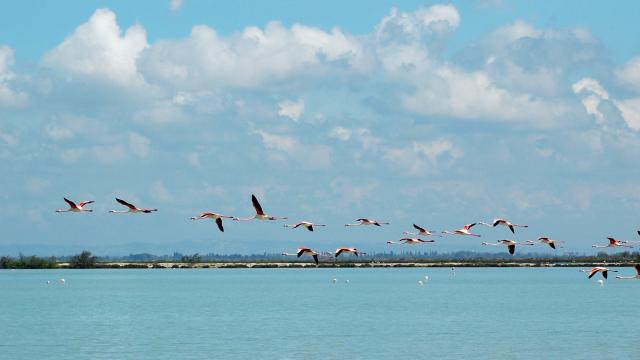Camargue, my favourite spot…
Hi, I’m Marcel, I’m 7 years old and I’m a pink flamingo! I was born on the shores of the Mediterranean. Maybe Spain, or perhaps Italy – I’m not sure. I spend most of my time in the South of France, in the Camargue Regional Nature Reserve. Why? First of all because I have good taste! Camargue is magnificent… Flaming sunsets play with the silvery surface of my lake. I can admire proud horses galloping, their manes dancing in the wind. But especially, the many shallow, saltwater lakes in these wetlands overflow with my favourite foods: shrimps, crabs, small shellfish and algae… I have a taste for larvae too! (and before you judge me, let me remind you that humans eat snails). To catch them, I wiggle my webbed feet in the mud and suck water up into my bill, which acts as a strainer. The water in Camargue is very salty, but nature has given me a special gland which allows me to eliminate the salt through my nostrils.















